Detailed analysis of the Konica Minolta Z3 images, from Imatest(tm)
I've recently begun using Norman Koren's excellent "Imatest" analysis program for quantitative, thoroughly objective analysis of digicam test images. I highly commend it to our technically-oriented readers, as it's far and away the best, most comprehensive analysis program I've found to date. (And with an introductory price of only $59, it's hard to beat.)
My comments below are just brief observations of what I see in the Imatest results. A full discussion of all the data Imatest produces is really beyond the scope of this review: Visit the Imatest web site for a full discussion of what the program measures, how it performs its computations, and how to interpret its output.
Here's some of the results produced by Imatest for the Konica Minolta Z3:
Color Accuracy
For the most part, the Konica Minolta Z3 has better than average color accuracy,
avoiding the oversaturation that's so common among consumer digicams. That
said, most consumers prefer slightly oversaturated color, so some people may
find the Z3's technically more accurate color a little flat-looking. In the
chart above oversaturation is shown by the extent to which the circles (camera
color) are displaced outward (higher saturation) relative to the ideal values
(squares), while undersaturation is shown by circles that are inside the squares.
On average, color saturation of swatches on the MacBeth ColorChecker(tm) chart
are 107.3% of their ideal values. (An average oversaturation of 7.3%.) Where
the Z3 does err a little is in its hue accuracy, tending to shift purples
toward blue, greens toward yellow, and orange shades toward red.
Color Analysis
These images show the color behavior of the DiMAGE Z3 directly. In each color
swatch, the outer perimeter shows the color as actually captured by the camera,
the inner square shows the color after correcting for the luminance of the photographed
chart (as determined by a 2nd-order curve fit to the values of the gray swatches),
and the small rectangle inside the inner square shows what the color should
actually be, based on perfect rendering to the sRGB color space.
Gray Patch Tone and Noise Analysis
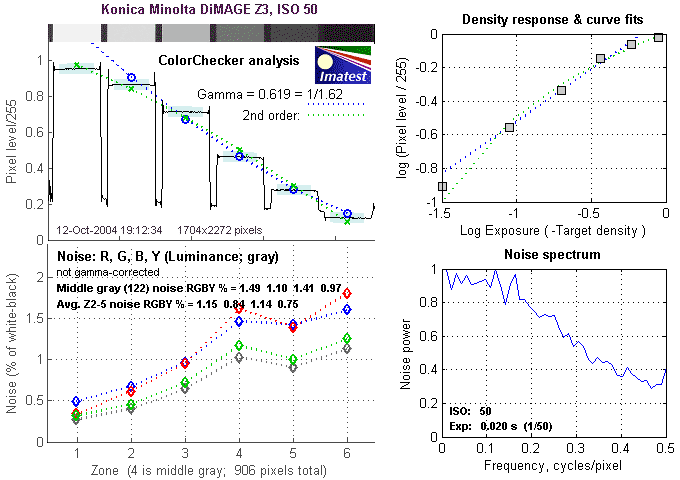
There's a lot in this particular graph, a lot more than I have room to go into
here. Bottom line, the Z3's noise levels are pretty low across the board, and
the noise spectrum is such that the noise is fairly fine-grained.
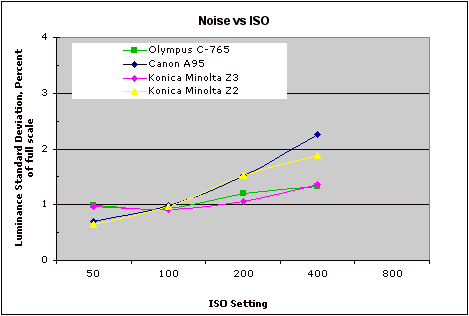
This chart compares the Konica Minolta DiMAGE Z3's noise performance over a
range of ISOs against that of other cameras. As you can see, the Z3 comes in
at the low end of the scale, across the full ISO range. What isn't shown here
though, is the extent to which the camera trades away subject detail to achieve
such low noise levels, particularly at ISO 400. (I'd personally be happy to
see a bit more image noise at ISO 400, if it meant hanging on to more subject
detail.)
The chart above shows consolidated results from spatial frequency response
measurements in both the horizontal and vertical axes. The "MTF 50"
numbers tend to correlate best with visual perceptions of sharpness, so those
are what I focus on here. The uncorrected resolution figures are 1215 line widths
per picture height in the horizontal direction (corresponding to the vertically-oriented
edge), and 1251 along the vertical axis (corresponding to the horizontally-oriented
edge), for a combined average of 1233 LW/PH. Correcting to a "standardized"
sharpening with a one-pixel radius increases this number a fair bit, to an average
of 1012 LW/PH. A little low for a four-megapixel camera, but not bad.
For the real techno-geeks, the two plots below show the actual edge response
of the Z3, for horizontal and vertical edges:
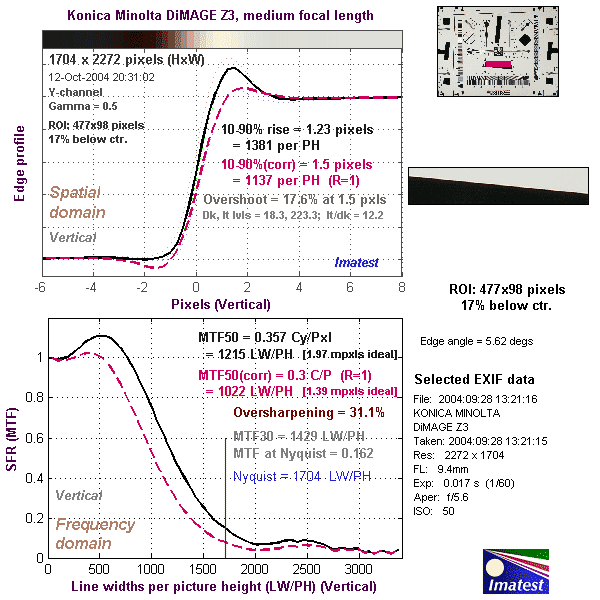
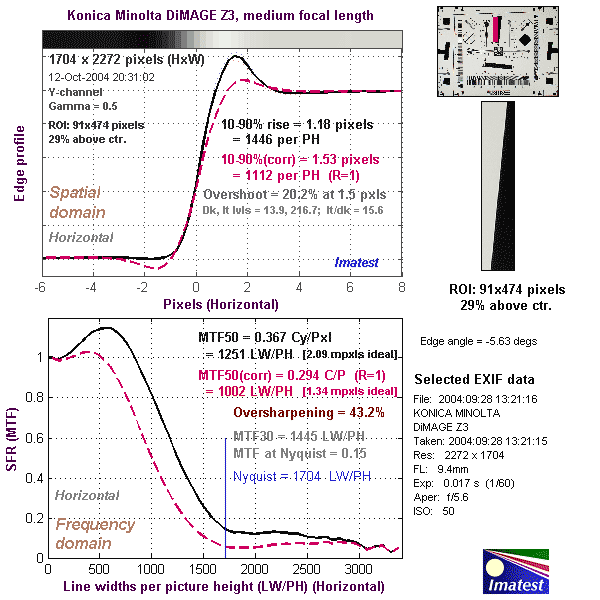
KMZ3 Test Images
KMZ3 Imatest Results
KMZ3 Specifications
KMZ3 "Picky Details"
Up to Imaging Resource digital cameras area
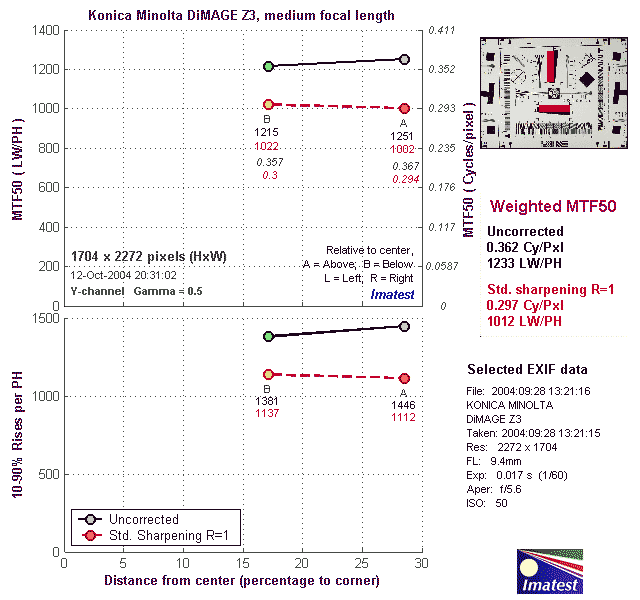

Follow Imaging Resource: